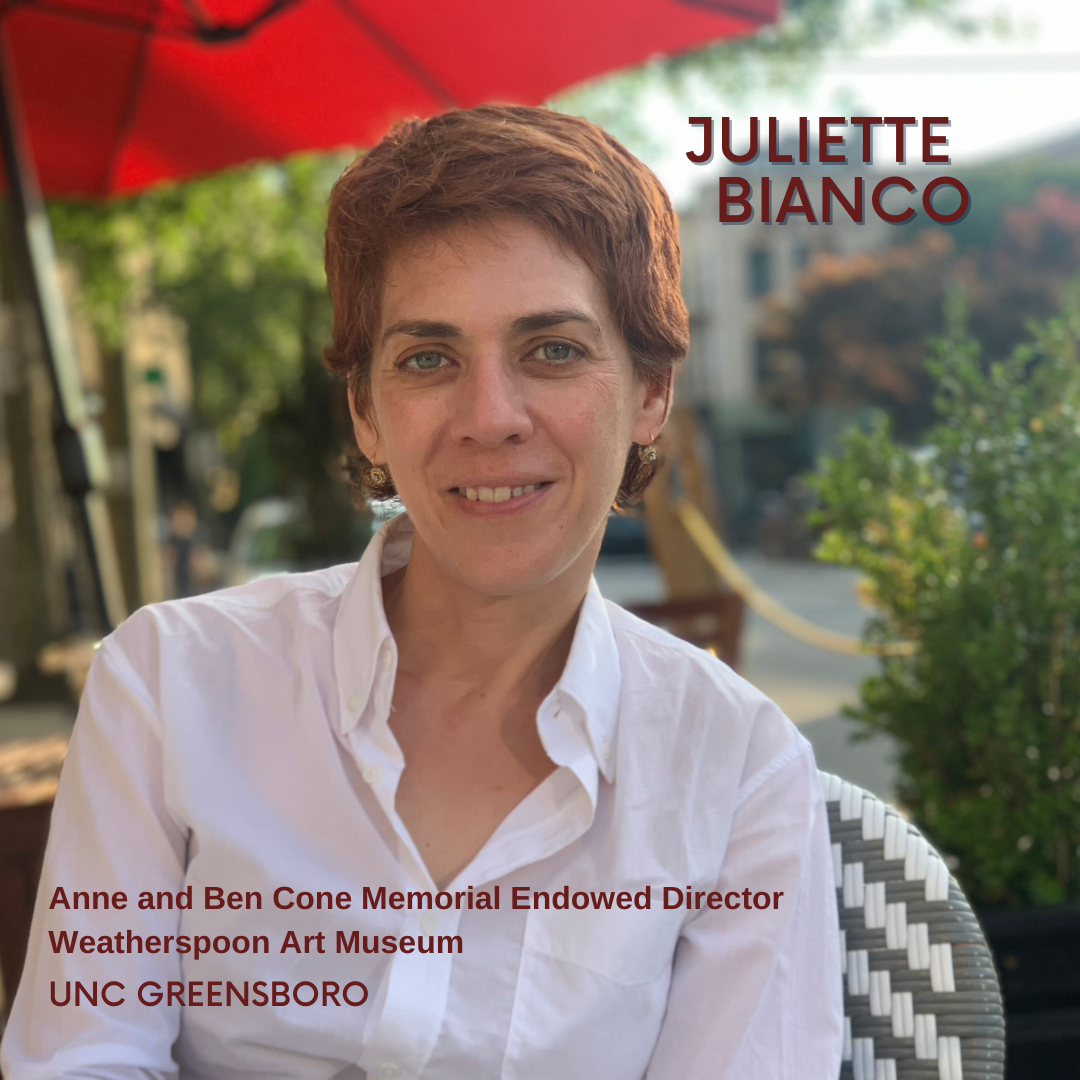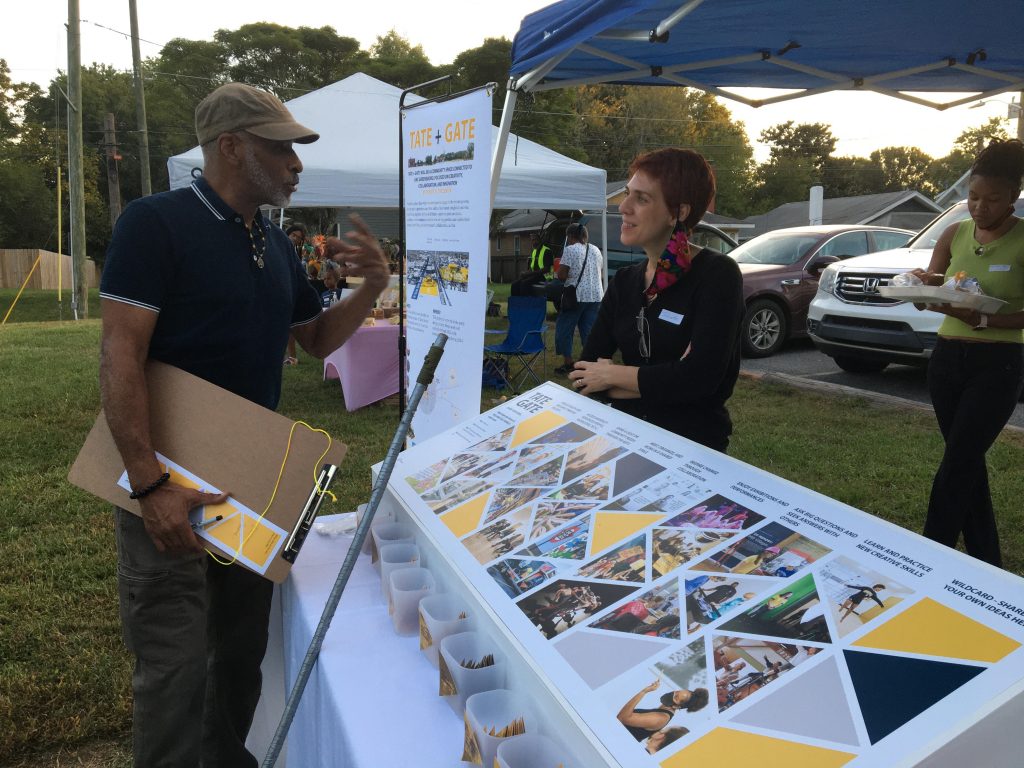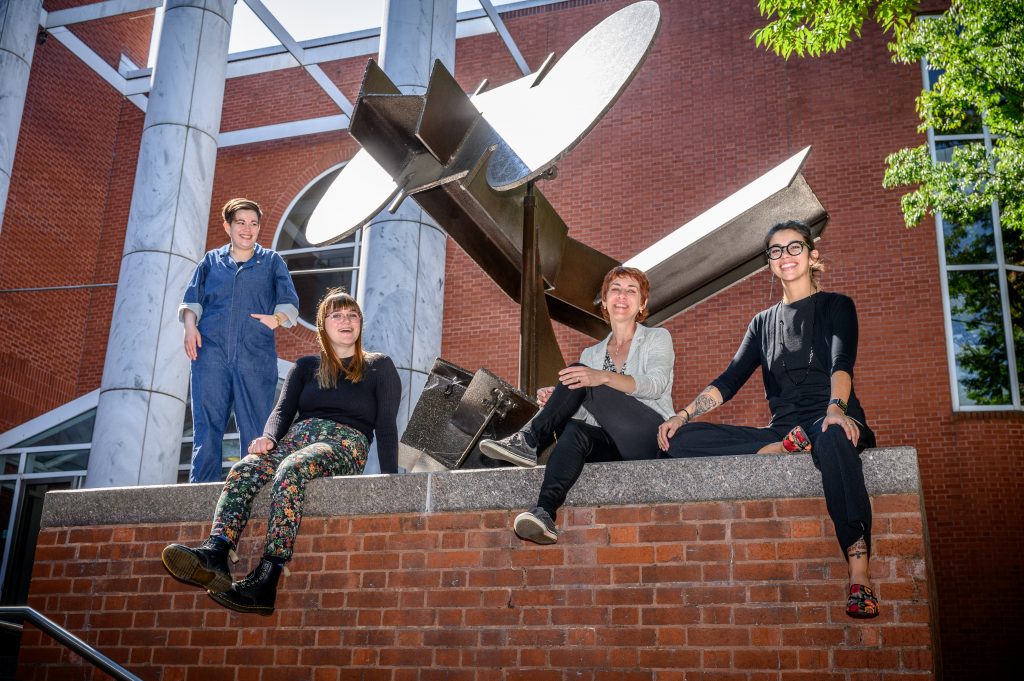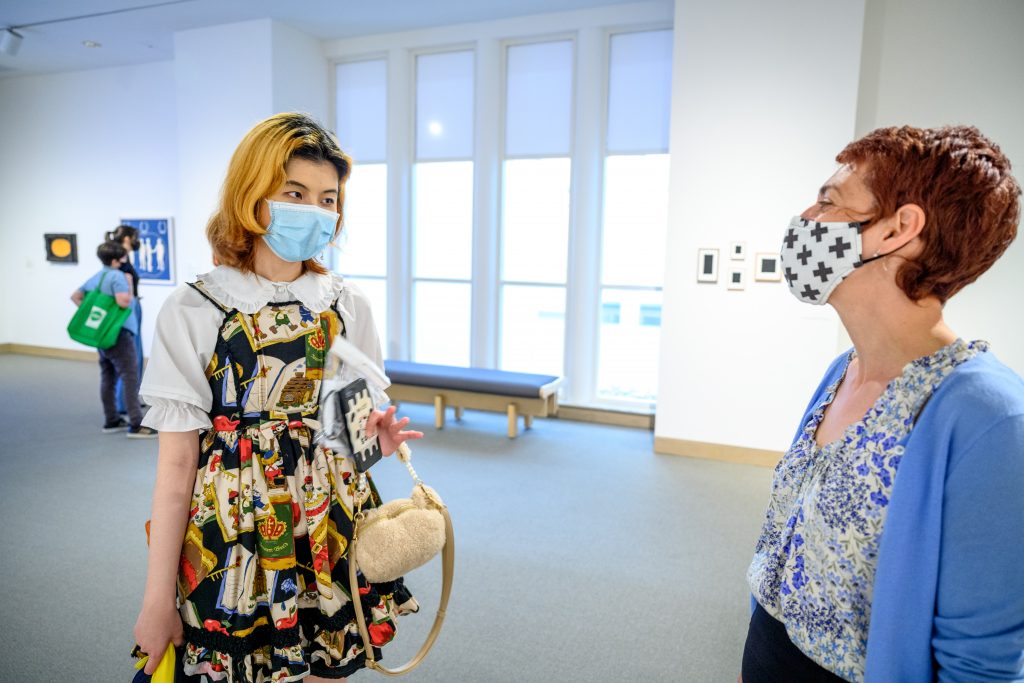November 2021, Juliette Bianco
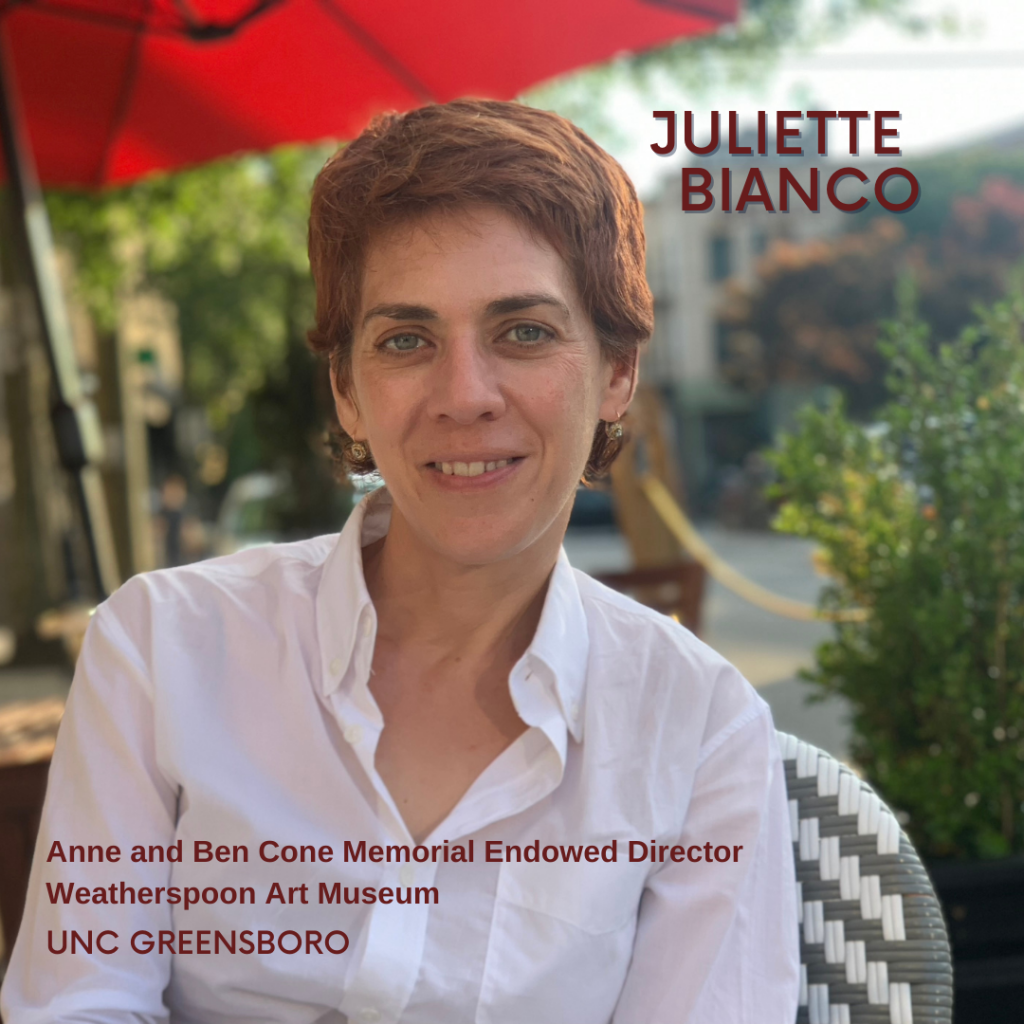
Juliette Bianco is the Anne and Ben Cone Memorial Endowed Director at the Weatherspoon Art Museum at the University of North Carolina, Greensboro. She is also an At-Large Board Member for AAMG. Thank you, Juliette, for your membership, your leadership, and sharing your time with us.
1. What is your current board role and what do you hope to bring to this position throughout your time in it?
I’m a board member at large, focusing on professional development. I look forward to learning about and implementing ways in which AAMG can support and provide relevant and impactful professional development opportunities for our members.
2. What’s one thing — either industry/work-related or not — you learned in the past month?
I just learned that Vicks VapoRub (invented in Greensboro, NC, the city I moved to a year ago) remained a relatively obscure treatment for a decade until it was marketed to relieve respiratory symptoms during the 1918–19 flu epidemic. This led to increased production, perceived nationwide shortages, and hoarding…
3. If you could trade places with anyone for a day, who would it be?
A couple weeks ago, I attended an exhilarating performance by the Sphinx Virtuosi, “the nation’s most dynamic, exhilarating professional chamber orchestra, dedicated to increasing racial and ethnic diversity in classical music.” The orchestra is also self-conducting. I was transfixed by not only the music, but this approach to collaboration. If I could trade places, it would be with a member of the orchestra, to experience that.
4. Coffee or Tea?
Tea (unless I’m drinking a really good coffee). I’ve just started blending loose teas each morning—like a teaspoon of chai rooibos with a teaspoon of a nutty black tea—and am having fun creating a new flavor for each day.
5. Book/Author suggestion?
Two excellent books I’ve read recently happen to be related to archives: the novel Lost Children Archive by Valeria Luiselli and M Archive: After the End of the World, the second in an experimental fiction triptych by Alexis Pauline Gumbs. While the books are very different, each explores—wrapped up in the activity of archiving and materiality of archives—how American environmental, immigration, and economic policies affect individual people’s lives, and life itself.
6. What did you want to be when you were growing up?
Both of my parents were teachers and my dad was also a principal. Growing up, I openly resisted the idea of becoming a teacher but also really wanted to be one. I think it’s no coincidence that I find myself here.
7. What do you enjoy most about being a part of an academic museum?
Just before writing this, I was speaking with a class of 140 first year art students. One student started a conversation about the “negative space in museums being as powerful as what’s on the wall” in response to a question about what they see in a photograph of an installation by Fred Wilson. It was one of the most interesting ways of thinking about that image, and it had not occurred to me. So, what I enjoy most are the endless possibilities that come from academic engagement with art. Every object, every student, every story holds the possibility of learning something new, thinking something new, or doing something new.
8. What are your hopes for our industry?
I hope that academic museum leaders—as individuals and collectively—are brave enough to include the needs and interests of their own diverse student and local communities in their decision making and uphold decisions that deliberately and positively affect them. That we are willing to question and challenge policies and practices in the museum industry that have become less relevant or even harmful and adapt and amplify those that lift our constituents up.
